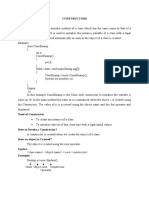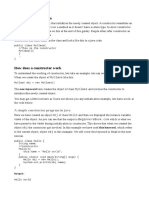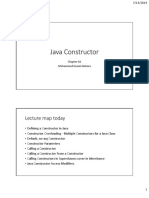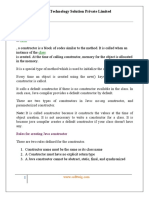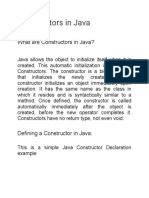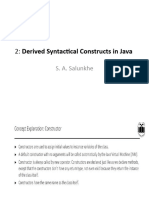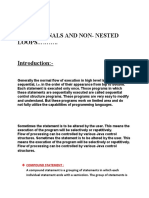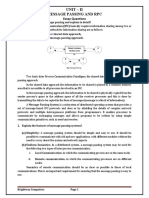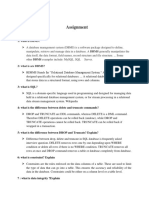0% found this document useful (0 votes)
143 views20 pagesSoda Chapter 7
A constructor is a special member function that is automatically called when an object is created. It initializes the object's member variables. Constructors can be default (no parameters) or parameterized (with parameters). Default constructors initialize member variables to default values, while parameterized constructors allow passing initial values as arguments.
Uploaded by
dinesh9866119219Copyright
© © All Rights Reserved
We take content rights seriously. If you suspect this is your content, claim it here.
Available Formats
Download as DOCX, PDF, TXT or read online on Scribd
0% found this document useful (0 votes)
143 views20 pagesSoda Chapter 7
A constructor is a special member function that is automatically called when an object is created. It initializes the object's member variables. Constructors can be default (no parameters) or parameterized (with parameters). Default constructors initialize member variables to default values, while parameterized constructors allow passing initial values as arguments.
Uploaded by
dinesh9866119219Copyright
© © All Rights Reserved
We take content rights seriously. If you suspect this is your content, claim it here.
Available Formats
Download as DOCX, PDF, TXT or read online on Scribd
/ 20

